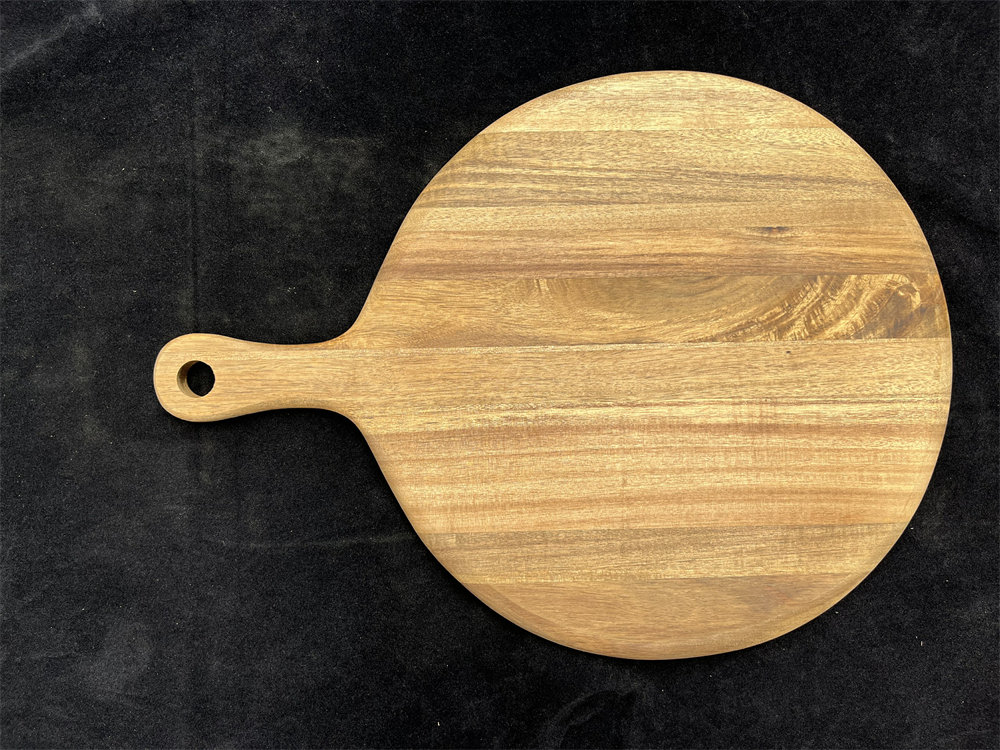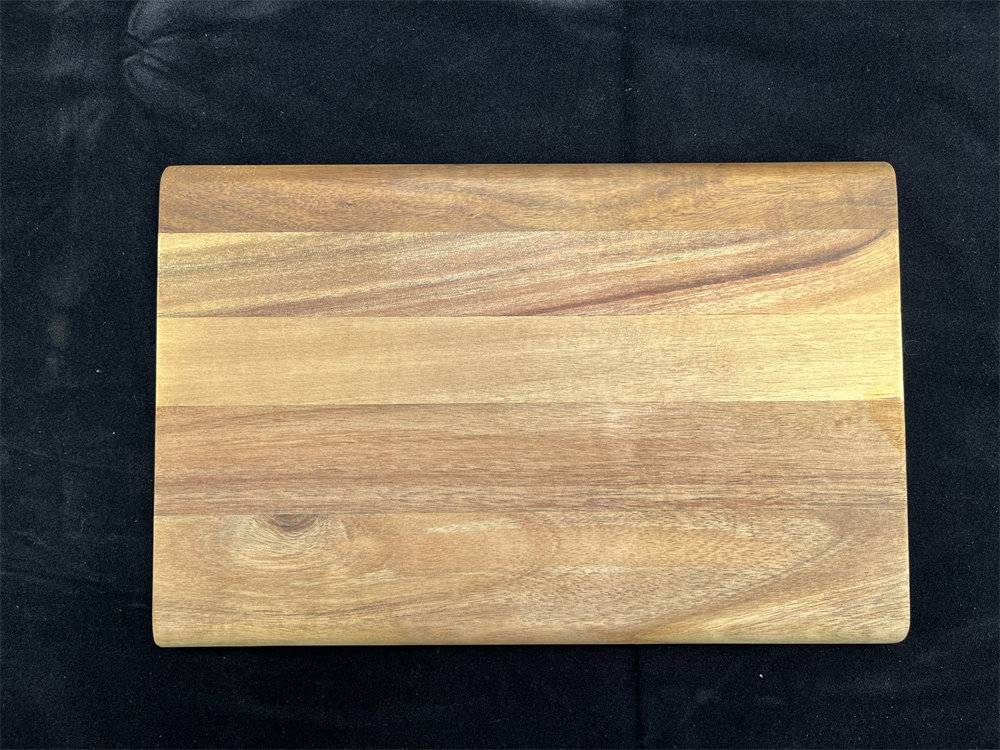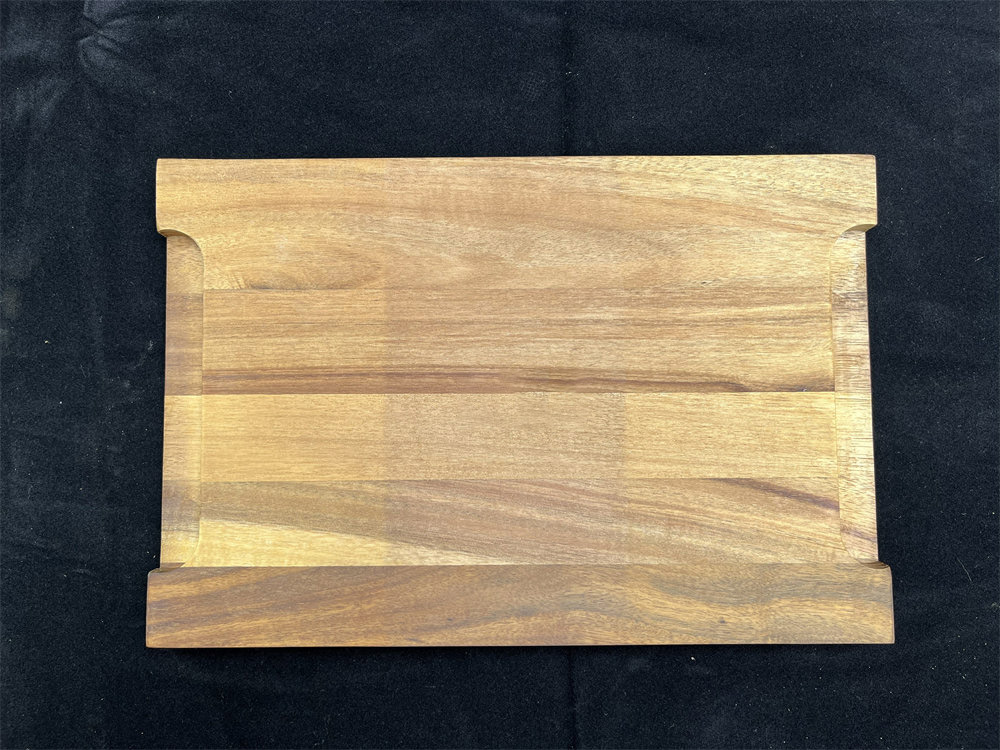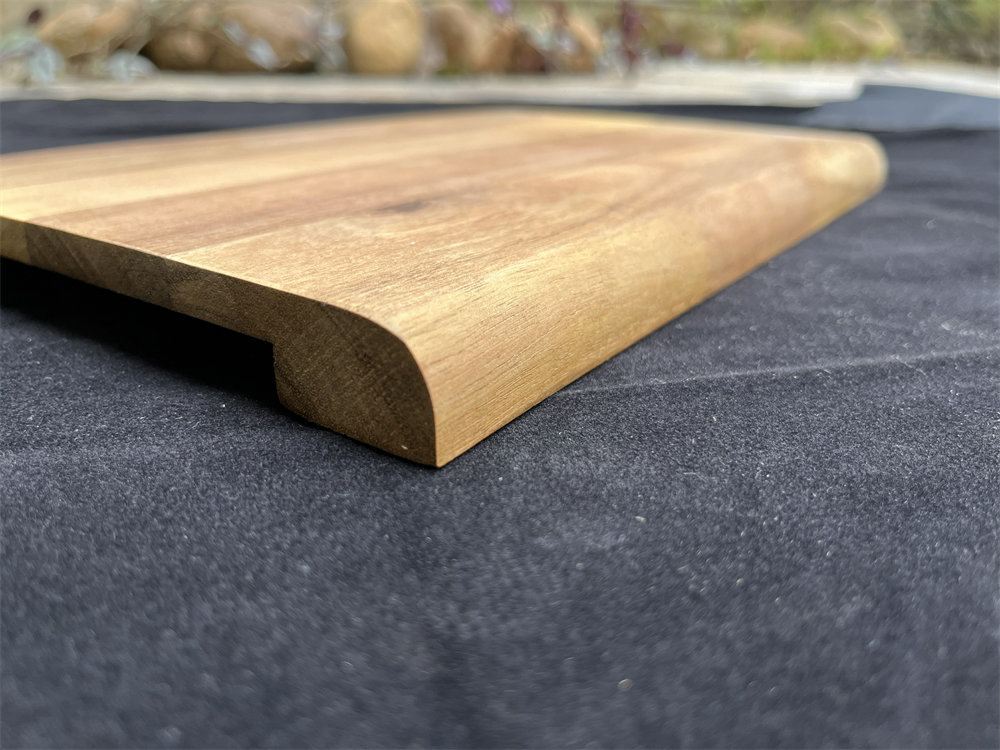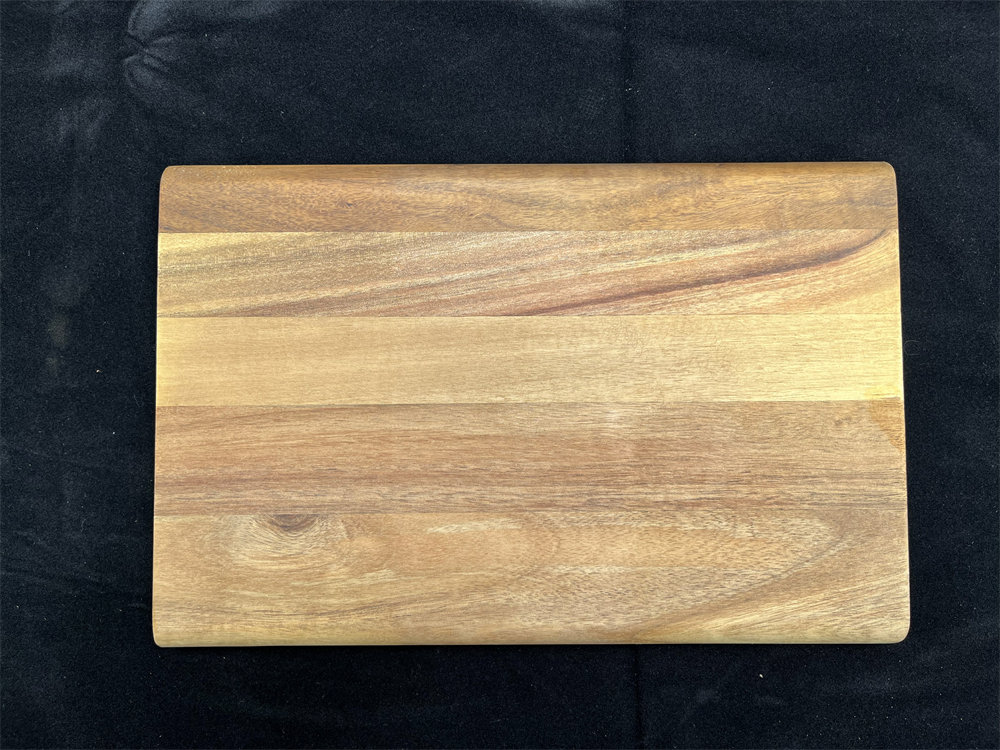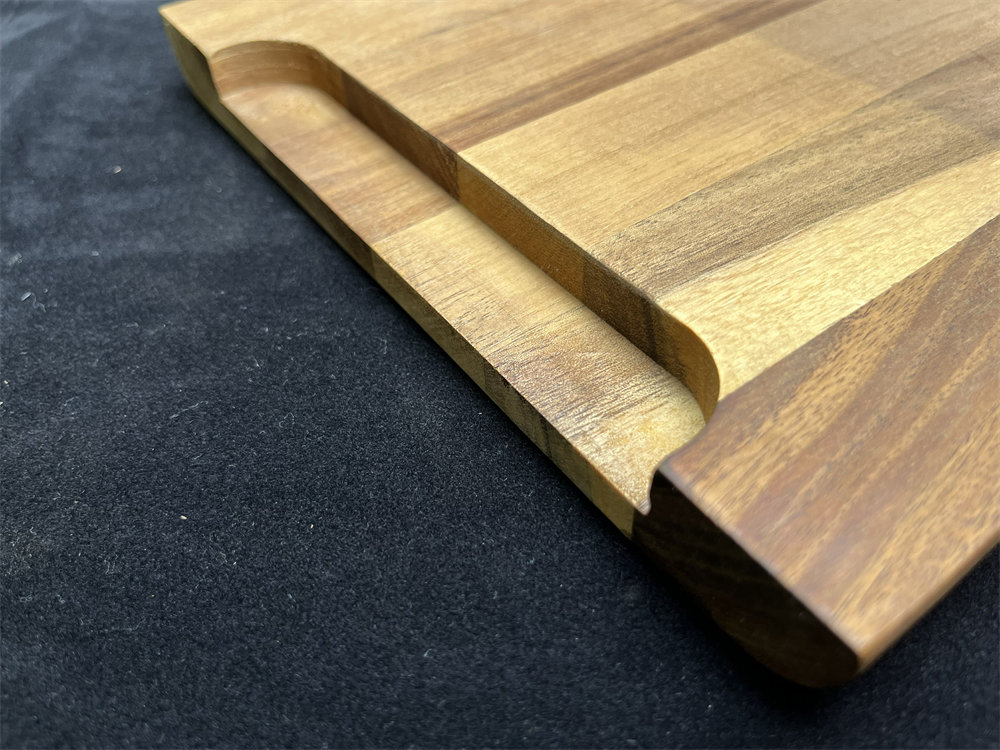Non Slip Chopping Board
- Product Information
Non Slip Chopping Board is a huge-size cutting board which is made from Grade-AA Acacia wood. The size of XYL-WCB004 Acacia wood cutting board is 45x35x2cm. It's the X-large board of the series. The Non Slip Chopping Board is very popular in Europe, America and Australia market. Users can cut the beef steak, pork chop, chicken wings or other meats on the X-large board.
XinYiLin Technics Factory has been an export-oriented manufacturing enterprise dedicating in the field of wooden product since 2007. Factory is located in Jiangmen of Guangdong, a manufacturing base in China. XinYiLin has more than 15 years manufacture experience for producing wooden kitchenwares such as wooden cutting boards, wooden pizza boards, wooden utensils, wooden pepper mills, wooden rolling pins, wooden coffee sets and so on.
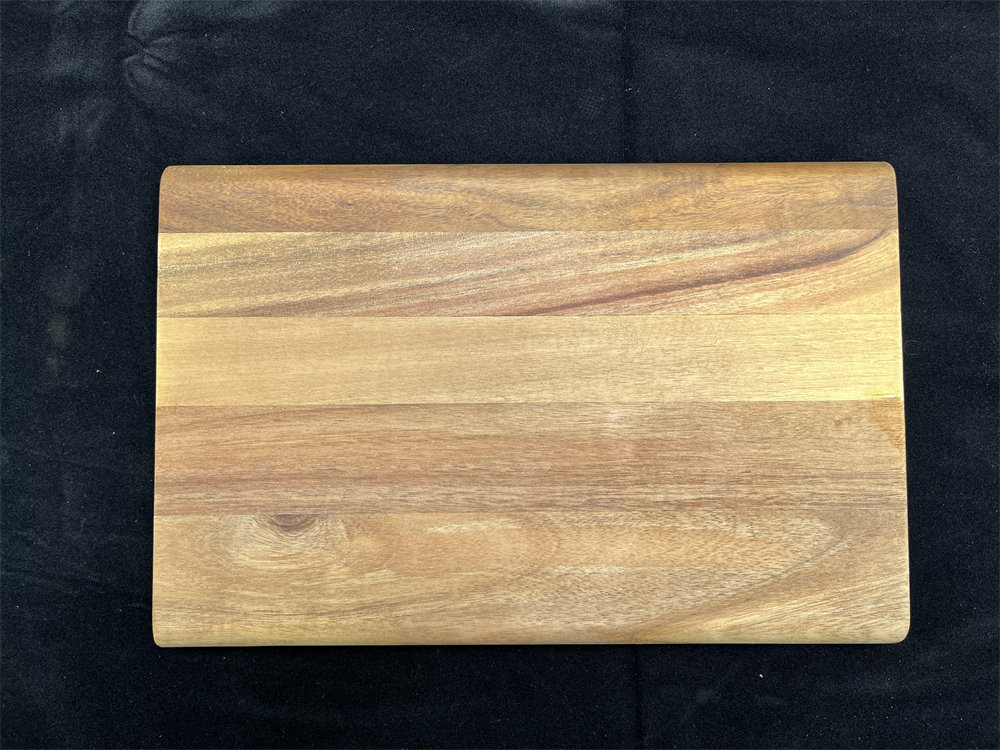
Non Slip Chopping Board Specifications:
| Model Number: | XYL-WCB004 |
| Product name: | Acacia wood cutting board |
| Material: | Acacia wood |
| Shape: | Rectangle |
| Size: | 45x35x2cm |
| Surface finish: | Lacquer or edible grade oil |
| Color: | Natural |
| Packing: | Poly bag + inner box + export carton |
| Place of Origin: | Guangdong China |
| MOQ: | 300 SETS |
| Lead time: | 30-35 Days |
| Shipping way: | Sea shipment, air shipment or express |
Features of non-slip cutting boards
1. Excellent anti-slip performance
The surface or bottom of the cutting board is usually equipped with anti-slip pads, textured designs or rubber materials to ensure that it is stable and does not move when cutting.
2. Diversified materials
Common materials for non-slip cutting boards include wood, bamboo, plastic and silicone, each of which has its own unique characteristics and applicable scenarios.
3. Strong durability
High-quality non-slip cutting boards are usually made of sturdy materials, have a long service life, and can withstand frequent use and cleaning.
4. Easy to clean
Most non-slip cutting boards have a smooth design and good waterproof performance, which is very convenient to clean.
5. Versatility
Not only suitable for cutting ingredients, but also can be used for plating, making pastries and other purposes.
Technical craftsmanship of non-slip cutting boards
1. Anti-slip pad design
By adding silicone or rubber anti-slip pads to the bottom of the cutting board, it can be firmly fixed on the table during operation.
2. Textured surface
Some cutting boards have fine textures on their surface, which can prevent slipping and reduce the slipping of ingredients when cutting.
3. Edge groove design
Grooves are set on the edges of the cutting board to prevent juice from flowing out, while increasing grip and further improving the anti-slip effect.
4. Integrated anti-slip function
Some high-end non-slip cutting boards adopt an overall anti-slip design, which can be used stably without additional accessories.
Application scenarios of non-slip cutting boards
1. Home kitchen
Suitable for daily cutting of vegetables, meat, and fruits, especially for families with small kitchen space or unstable worktops.
2. Catering industry
In restaurants, fast food restaurants and other places, non-slip cutting boards can improve the work efficiency of chefs and reduce safety hazards caused by slipping.
3. Outdoor cooking
When camping or picnicking, using a non-slip cutting board can prevent the cutting board from sliding when operating on a moving or uneven surface.
4. Baking
When making baked goods such as bread and cakes, non-sliding cutting boards can stabilize the kneading and cutting process of dough.
5. Children's cooking education
When teaching children to learn to cook, using non-sliding cutting boards can reduce the risk of cutting and increase safety.
6. Professional cooking competitions
In cooking competitions, contestants need to complete cooking quickly and efficiently, and the stability of non-sliding cutting boards can help them perform better.
7. Food processing plants
On food processing lines, non-sliding cutting boards can ensure that workers can complete food cutting tasks efficiently and safely.
How to clean non-sliding cutting boards
1. Daily cleaning
Use warm water and neutral detergent to clean the surface of the cutting board, and avoid using strong acid and alkali cleaners to avoid damaging the material.
2. Disinfection
You can wipe the cutting board with diluted white vinegar or food-grade disinfectant to ensure hygiene and safety.
3. Remove odors
For wooden or bamboo cutting boards that easily absorb odors, you can use lemon juice or baking soda to clean them.
4. Avoid long-term soaking
Especially for wooden and bamboo cutting boards, long-term soaking may cause deformation or cracking.
5. Dry and store
After cleaning, place the cutting board in a ventilated place to dry, avoid direct sunlight to prevent material aging.
Maintenance methods for non-sliding cutting boards
1. Regular care
For wooden cutting boards, you can apply food-grade mineral oil regularly to prevent cracking.
2. Avoid high temperatures
Cutting boards should not come into contact with high-temperature objects to avoid deformation or damage to the material.
3. Classified use
It is recommended to use different cutting boards for raw and cooked food to avoid cross-contamination.
4. Check the anti-slip pad
Regularly check the wear of the anti-slip pad and replace it in time if it is damaged to maintain its anti-slip performance.
5. Avoid heavy pressure
Do not put heavy objects on the cutting board to avoid deformation or affecting the anti-slip effect.


